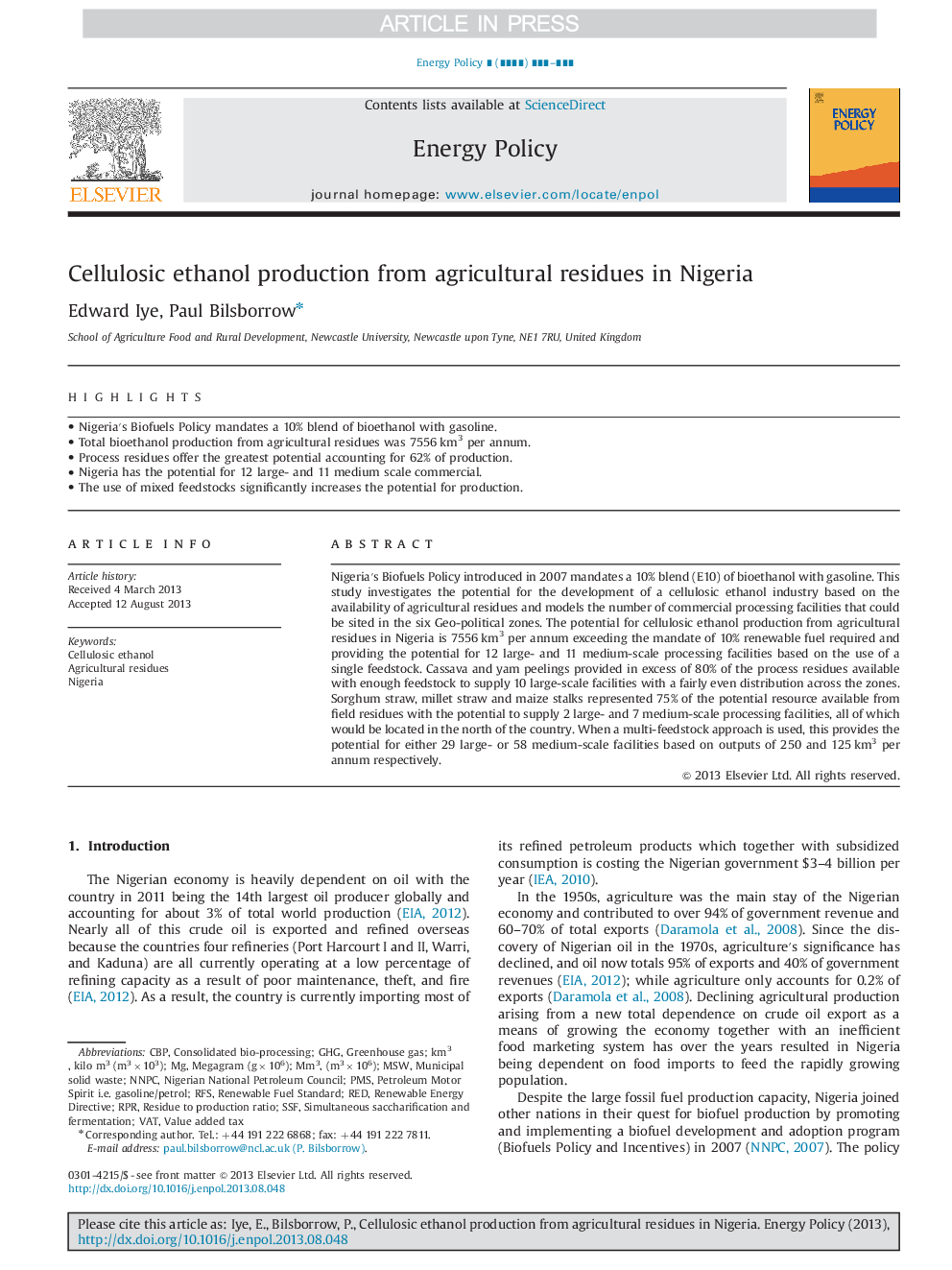| کد مقاله | کد نشریه | سال انتشار | مقاله انگلیسی | نسخه تمام متن |
|---|---|---|---|---|
| 7403340 | 1481295 | 2013 | 8 صفحه PDF | دانلود رایگان |
عنوان انگلیسی مقاله ISI
Cellulosic ethanol production from agricultural residues in Nigeria
ترجمه فارسی عنوان
تولید اتانول سلولز از بقایای کشاورزی در نیجریه
دانلود مقاله + سفارش ترجمه
دانلود مقاله ISI انگلیسی
رایگان برای ایرانیان
کلمات کلیدی
GHGSSFMSWPMSRFSRPRCBPMM3Cellulosic ethanol - اتانول سلولزRenewable Fuel Standard - استاندارد سوخت قابل بازیافتAgricultural residues - باقی مانده های کشاورزیRenewable Energy Directive - دستورالعمل انرژی تجدید پذیرMunicipal solid waste - زباله جامد شهریRED - سرخValue added tax - مالیات بر ارزش افزودهVAT - مالیات بر ارزش افزودهNigeria - نیجریهsimultaneous saccharification and fermentation - واکسیناسیون و تخمیر همزمانGreenhouse gas - گاز گلخانه ای
موضوعات مرتبط
مهندسی و علوم پایه
مهندسی انرژی
مهندسی انرژی و فناوری های برق
چکیده انگلیسی
Nigeriaâ²s Biofuels Policy introduced in 2007 mandates a 10% blend (E10) of bioethanol with gasoline. This study investigates the potential for the development of a cellulosic ethanol industry based on the availability of agricultural residues and models the number of commercial processing facilities that could be sited in the six Geo-political zones. The potential for cellulosic ethanol production from agricultural residues in Nigeria is 7556Â km3 per annum exceeding the mandate of 10% renewable fuel required and providing the potential for 12 large- and 11 medium-scale processing facilities based on the use of a single feedstock. Cassava and yam peelings provided in excess of 80% of the process residues available with enough feedstock to supply 10 large-scale facilities with a fairly even distribution across the zones. Sorghum straw, millet straw and maize stalks represented 75% of the potential resource available from field residues with the potential to supply 2 large- and 7 medium-scale processing facilities, all of which would be located in the north of the country. When a multi-feedstock approach is used, this provides the potential for either 29 large- or 58 medium-scale facilities based on outputs of 250 and 125Â km3 per annum respectively.
ناشر
Database: Elsevier - ScienceDirect (ساینس دایرکت)
Journal: Energy Policy - Volume 63, December 2013, Pages 207-214
Journal: Energy Policy - Volume 63, December 2013, Pages 207-214
نویسندگان
Edward Iye, Paul Bilsborrow,
